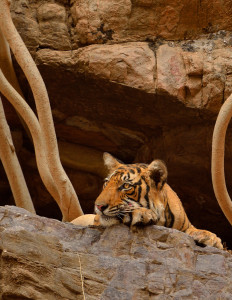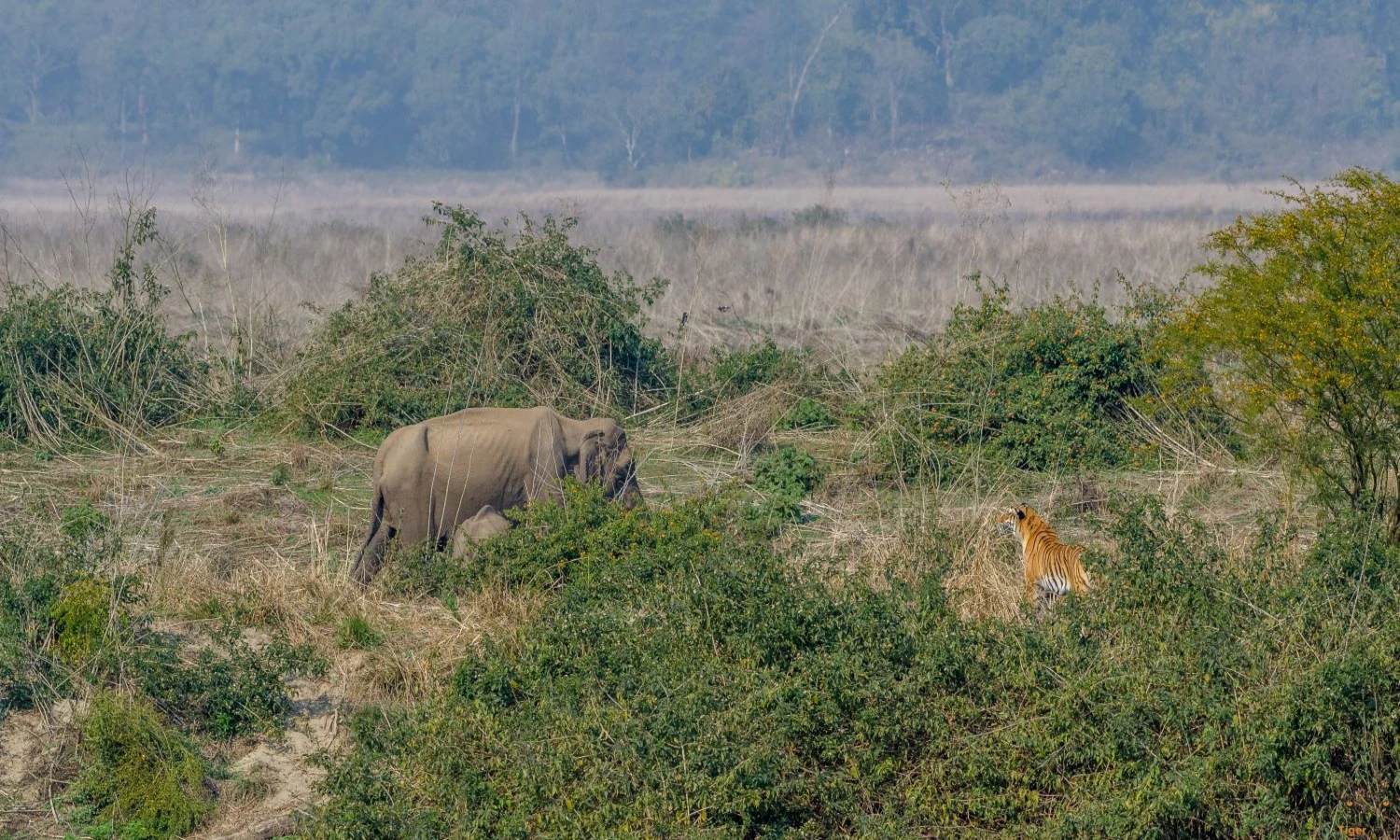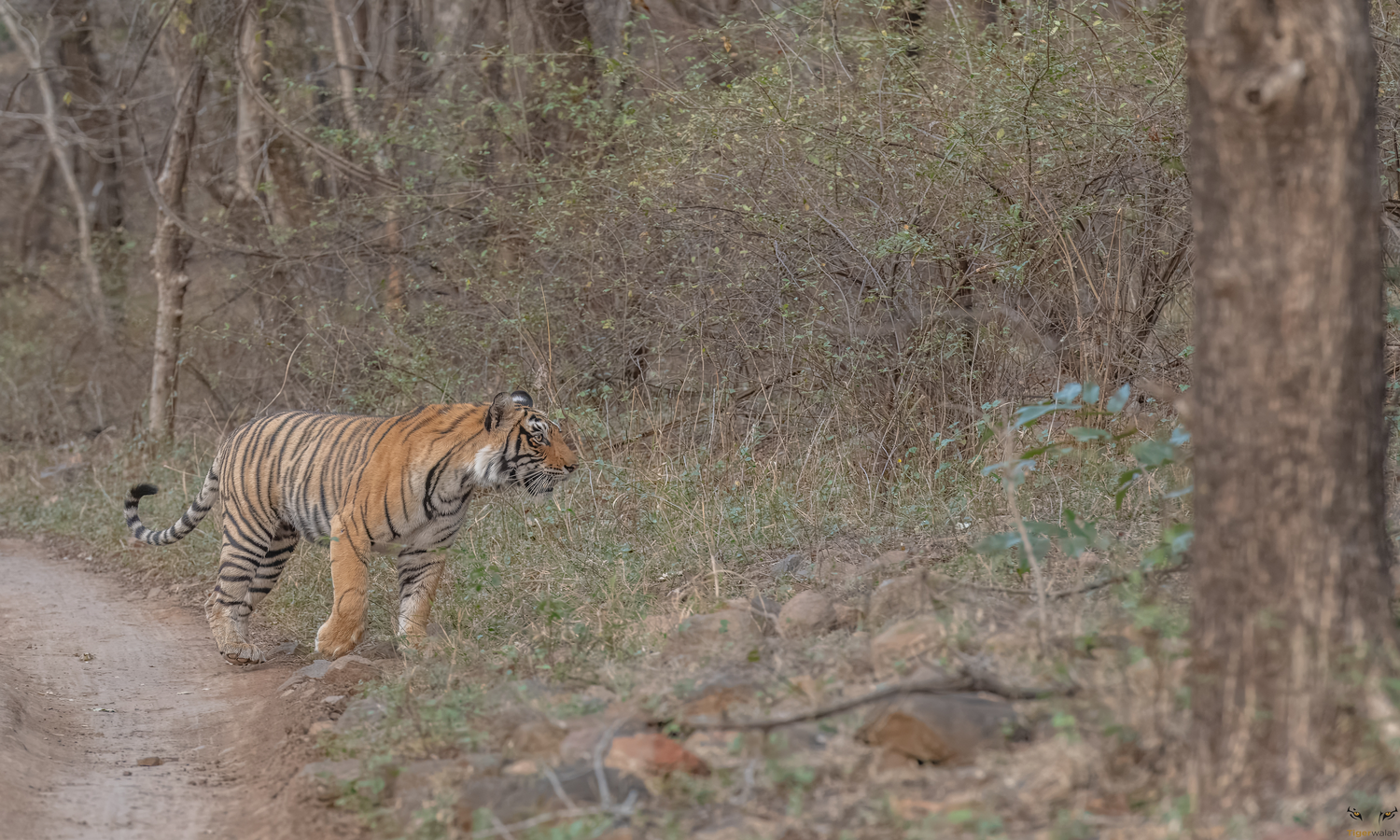Neighbours Gain Owners Loose

It is a matter of a few days before orphan cubs of T5, two sub-adult females are trans-located to their new home at Sariska Tiger Reserve. As per sources forest department is currently tracking their movement & experts from WII are already camping at Ranthambhore so that this operation can be completed in the next two-three days.
While it is good news for Sariska & it would further boost the efforts to revive the big cat population at Sariska not sure if Ranthambhore can afford to be happy about this transaction. While there has been talk about excess tigers as a result of the recent baby boom, Ranthambore’s male-female ratio is heavily skewed towards male tigers. To put it simply, there are more males in the park than females which has the following impact:
- More males mean more territory required by each individual & since space is a limited commodity increased conflict.
- Each male tiger does not have more than one mating opportunity i.e. it has only one female or less to mate with. Family behaviour exhibited by tigers i.e. male & female sticking together for longer periods could also be due to the above-mentioned reason. This fact is pretty evident on the ground as T24-T39, T28-T19, T6-T41, T34-T8, T42-T37, T33-T11 are associated with each other for long.
- Lesser females to mate could also result in increased conflict in males to mate & even might force male tigers to move out in search of partners.
- Currently of the 14 females present in the park, 7 are busy rearing cubs of various sizes, 2 are too old to mate & 2 females are associated with single males for a long time. These are therefore unavailable for mating to other males.
- Interestingly T11 & T8 whose previous litter have recently separated are again reportedly mating with the same males T33 & T34 who had fathered their previous litter.
I had recently, out of purely academic interest compiled a report on the gender ratio of the park & this report did show some interesting data:
At present the adult population is 25 out of which there are 14 females & 11 males including two non-breeding females T16 & T22. The gender ratio is pegged at 1:1.27 for females. In case non-breeding females are removed from the count the gender ratio comes down to 1.09 females per male. If we include the entire population(adults+cubs) the number is 1.08 female/male & further removing non-breeding females would bring the ratio down to .92 females per male.
If two more females with breeding potential are gifted to Sariska the gender ratio would look like .84 females/male which in idealistic conditions should be 3 females/male. In such a scenario the need of hour is to move sub-adult male tigers rather than females. The average age of dominant males in the park is 6-7 years so no territory is going to get vacated soon. Even the older males like Jhumroo & T3 are holding ground are would last a couple of years at least. 25 adult males with an average territory of 50 sq km (males can have bigger territories as well) would mean an area requirement of 1250 sq km or more. Whether Ranthambhore has this much area available is anybody’s guess.
In the next six months 15 cubs are going to turn sub-adults & of these 9 are male. How moving these two females as an alternative to space crunch will help in improving the situation?? I guess not. My sympathies are with the male tigers of Ranthambhore who are getting deprived of two potential mates.











Be the first to share your thoughts!